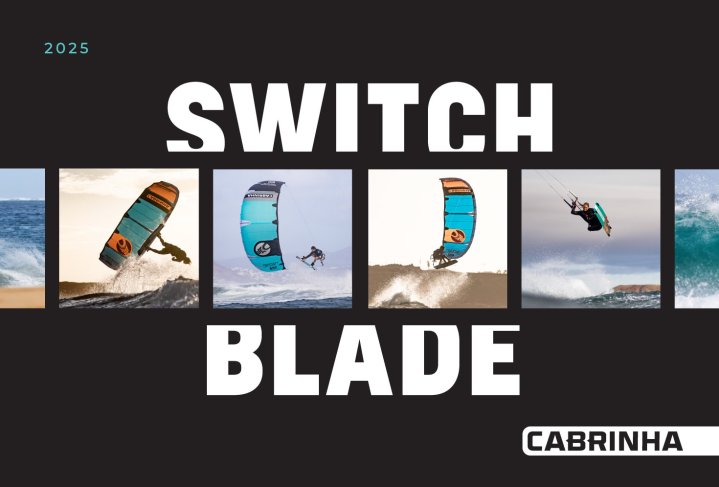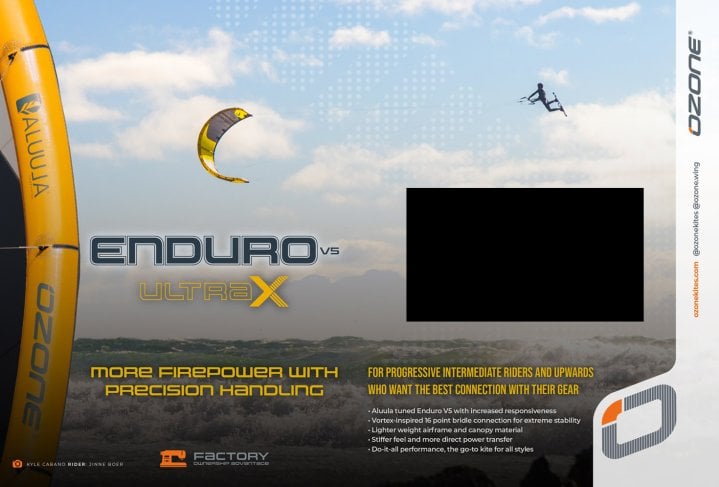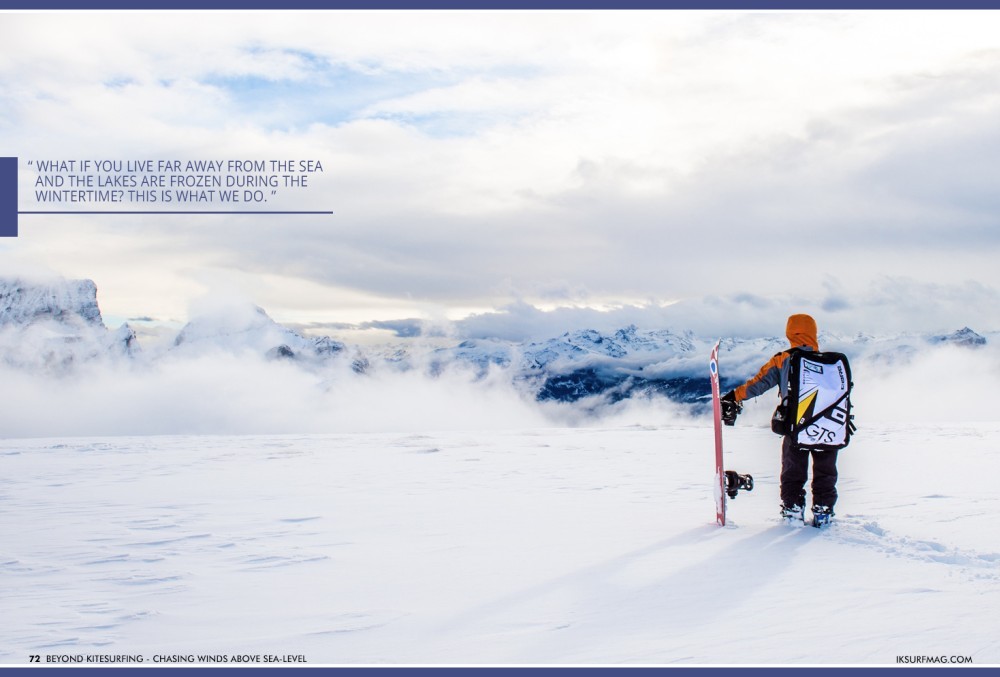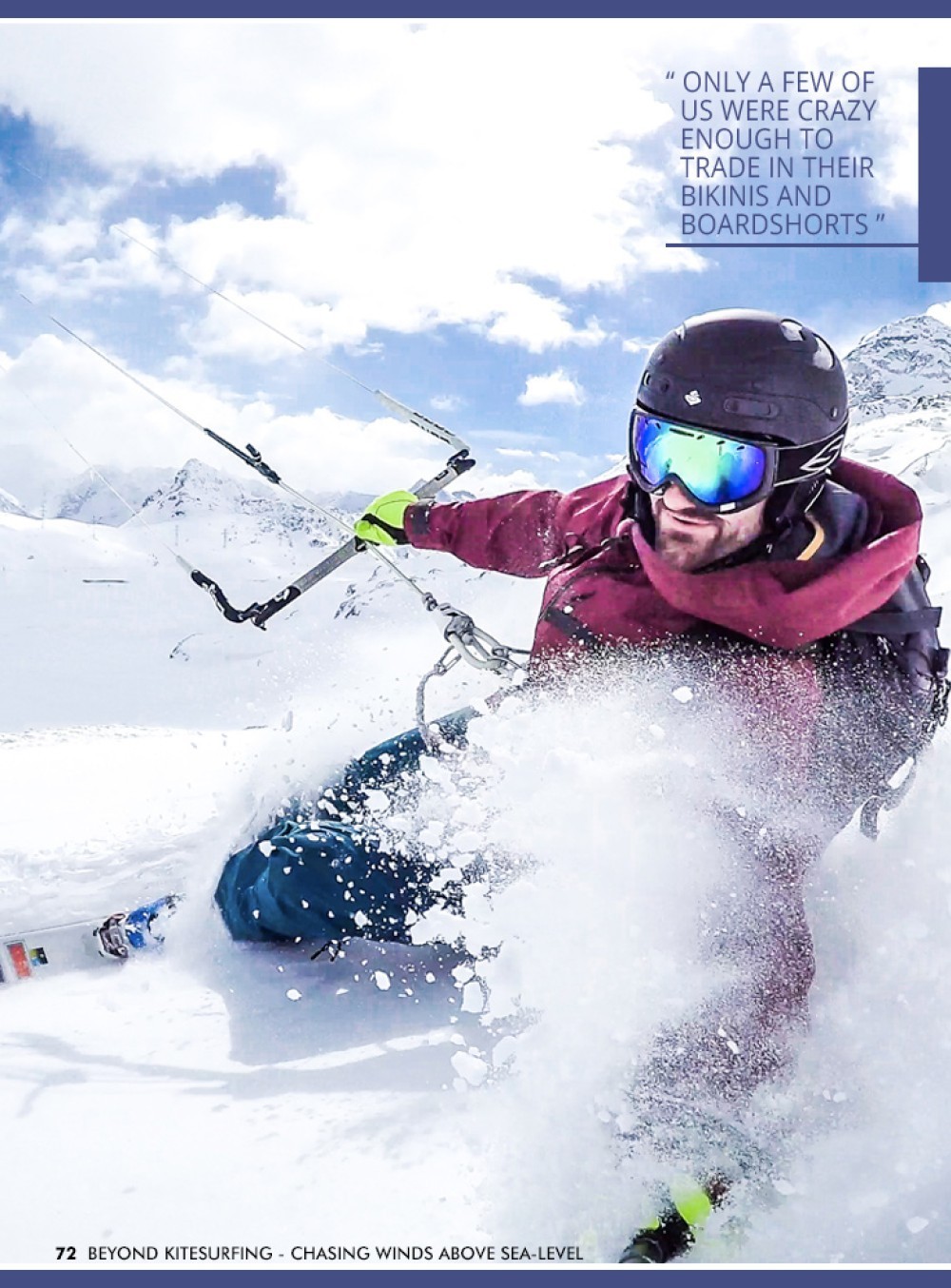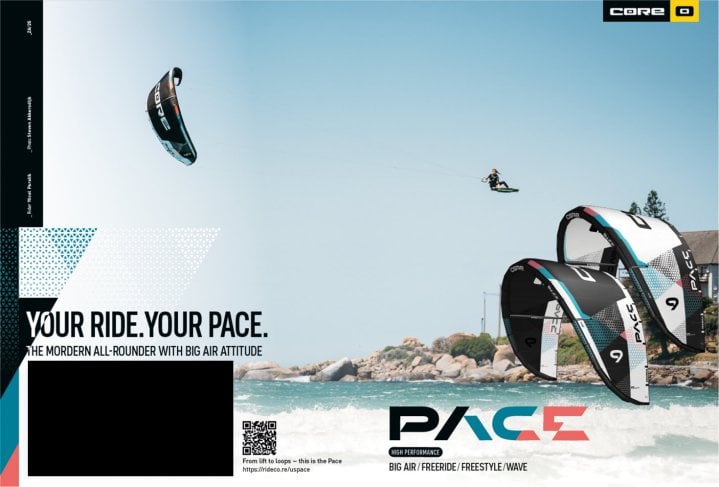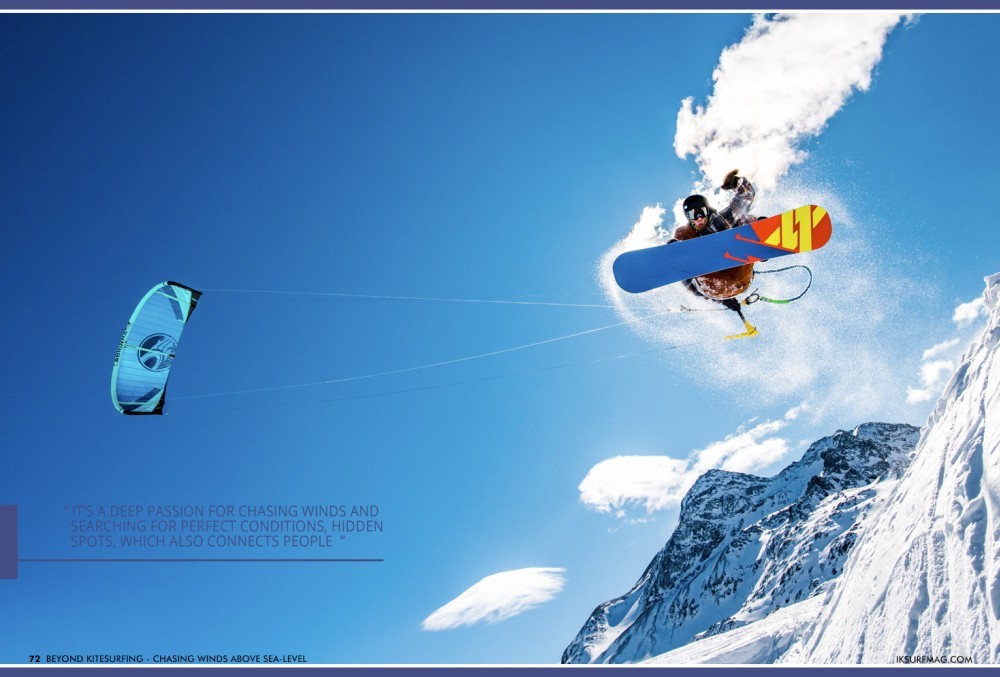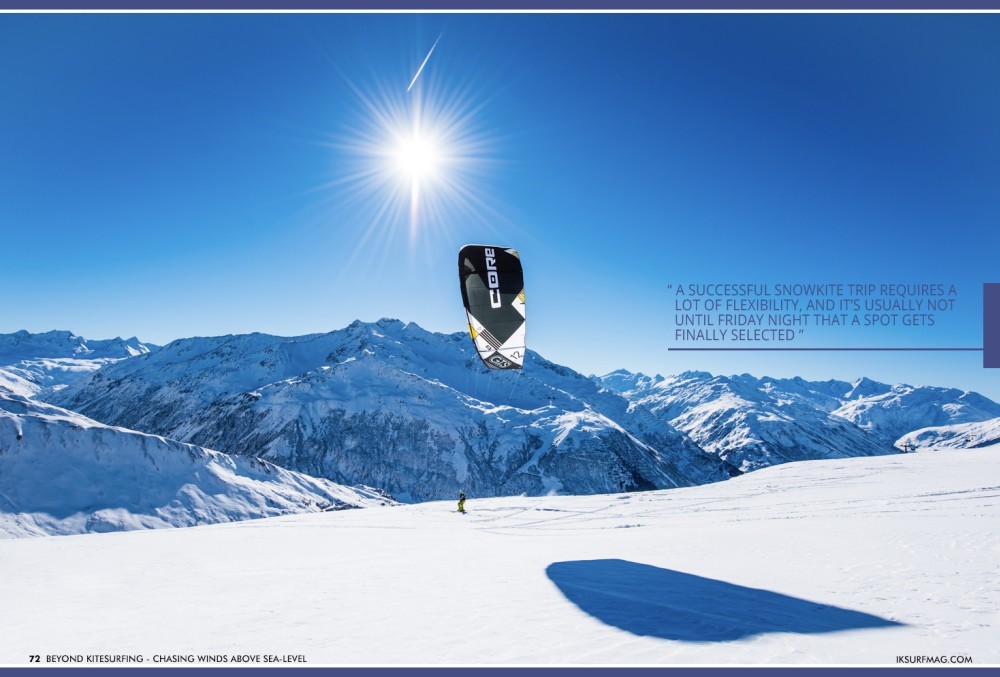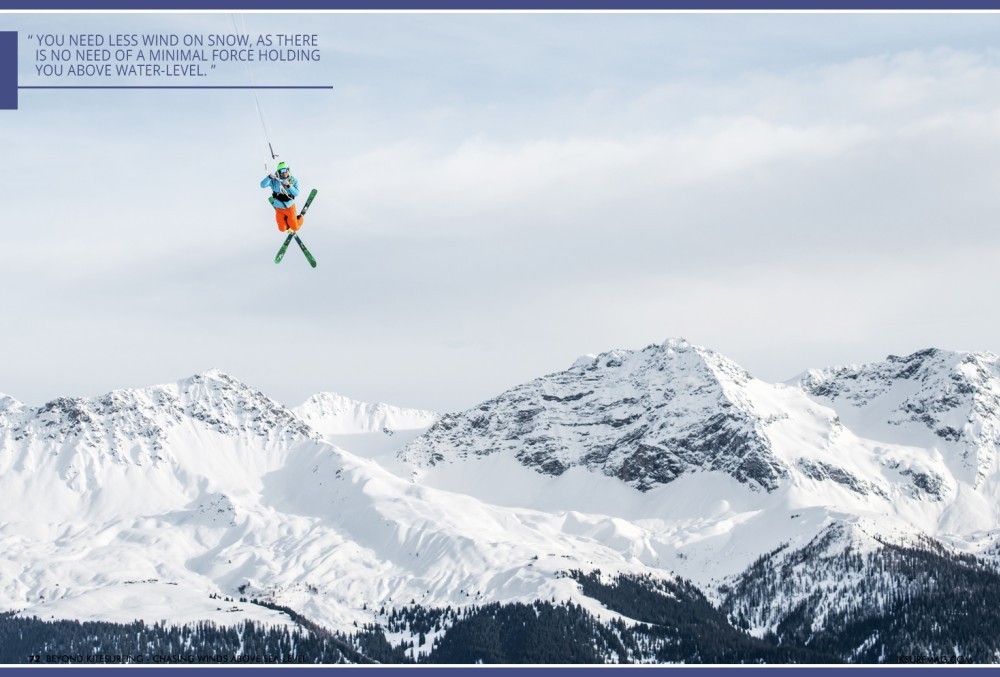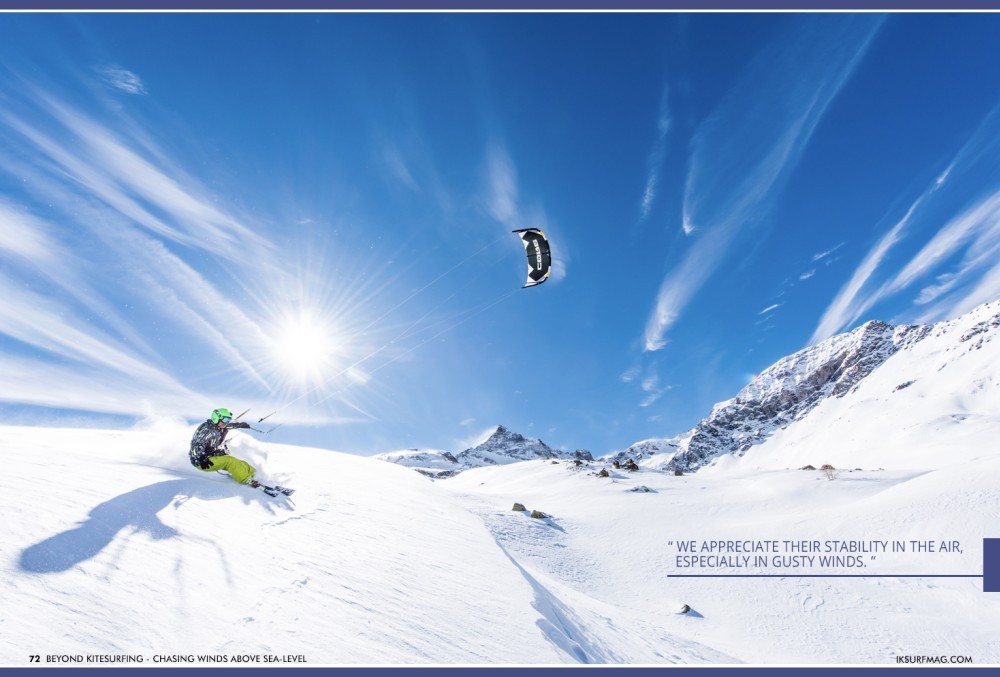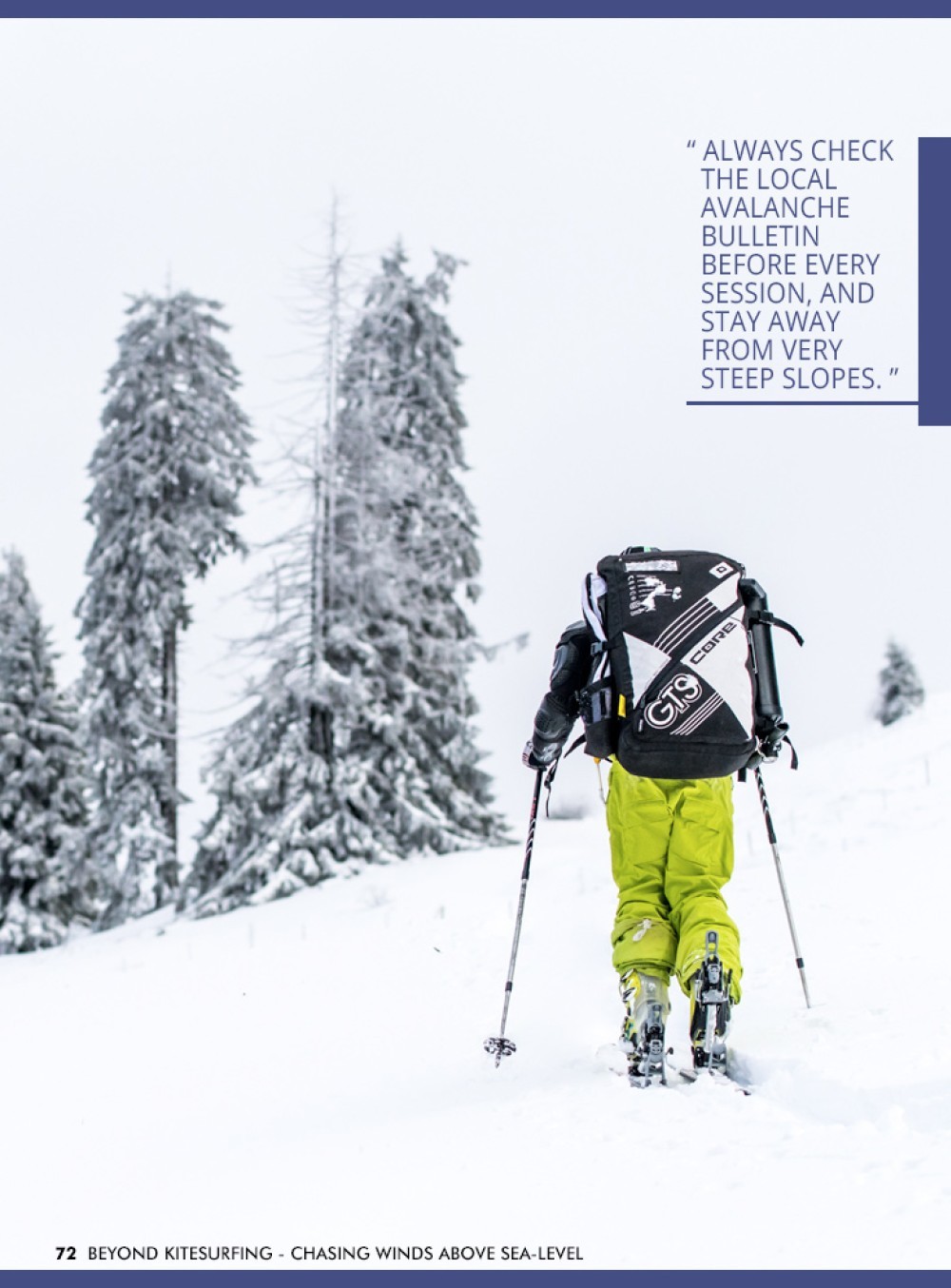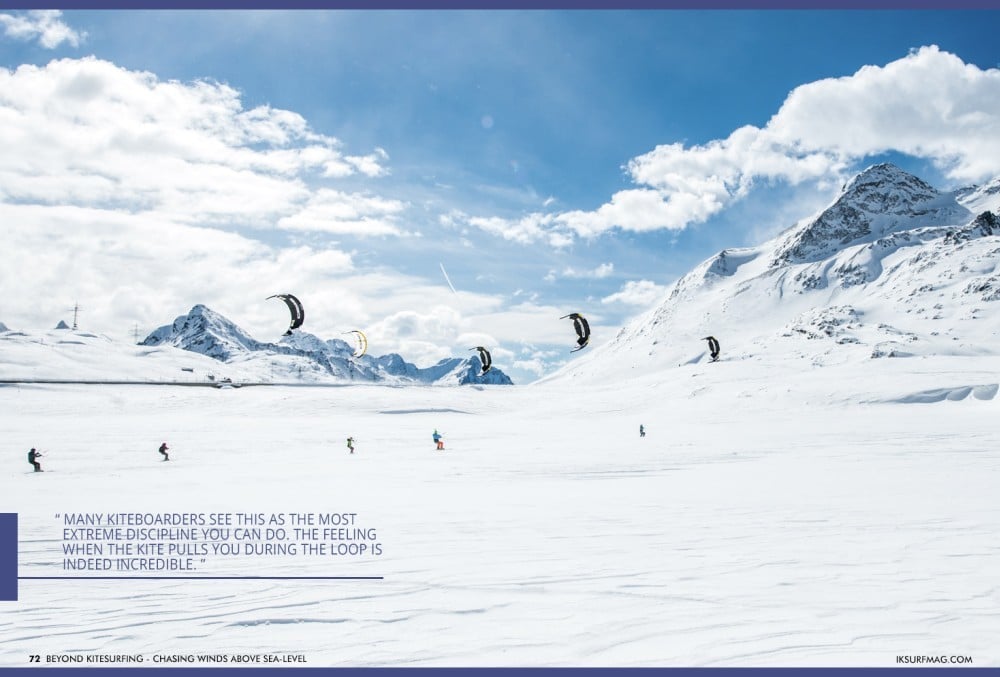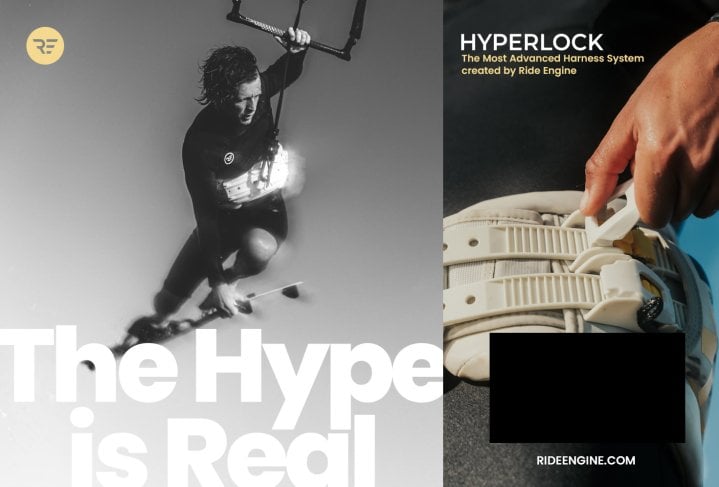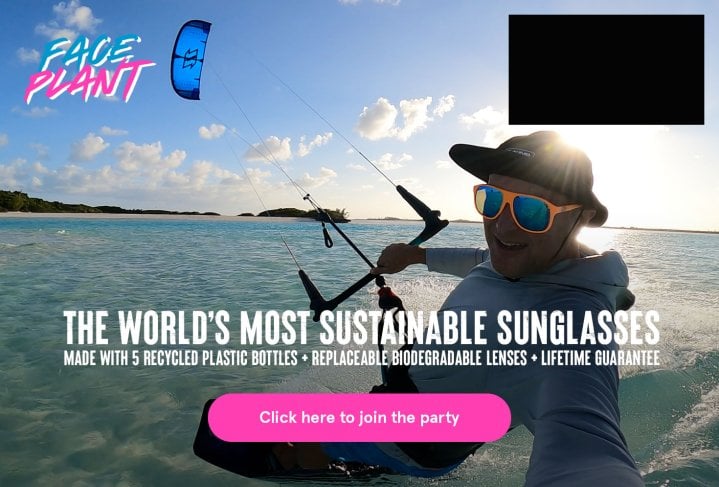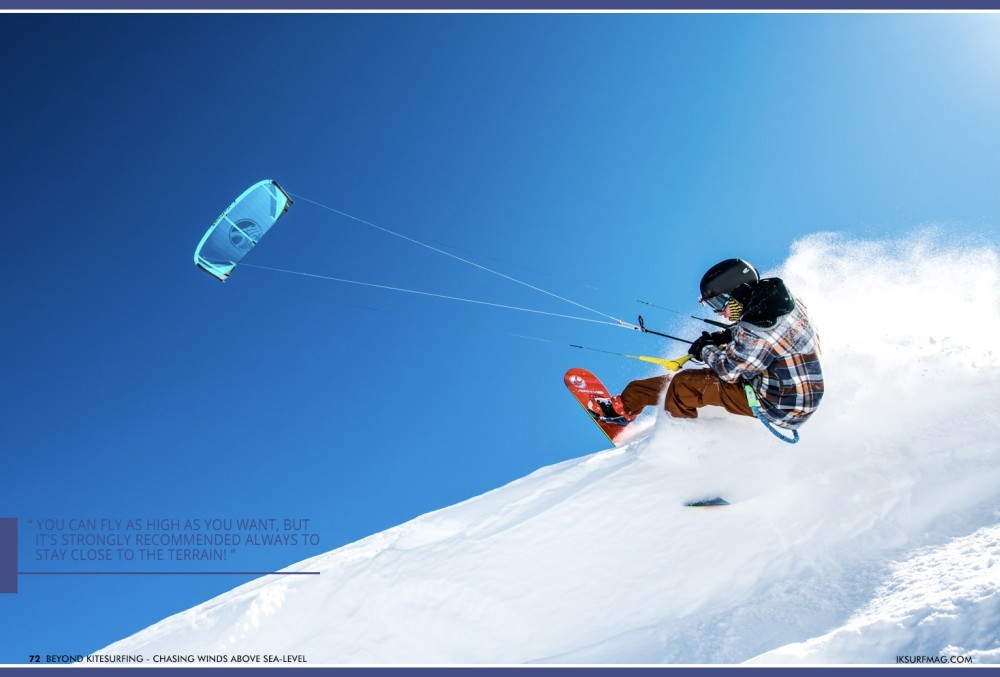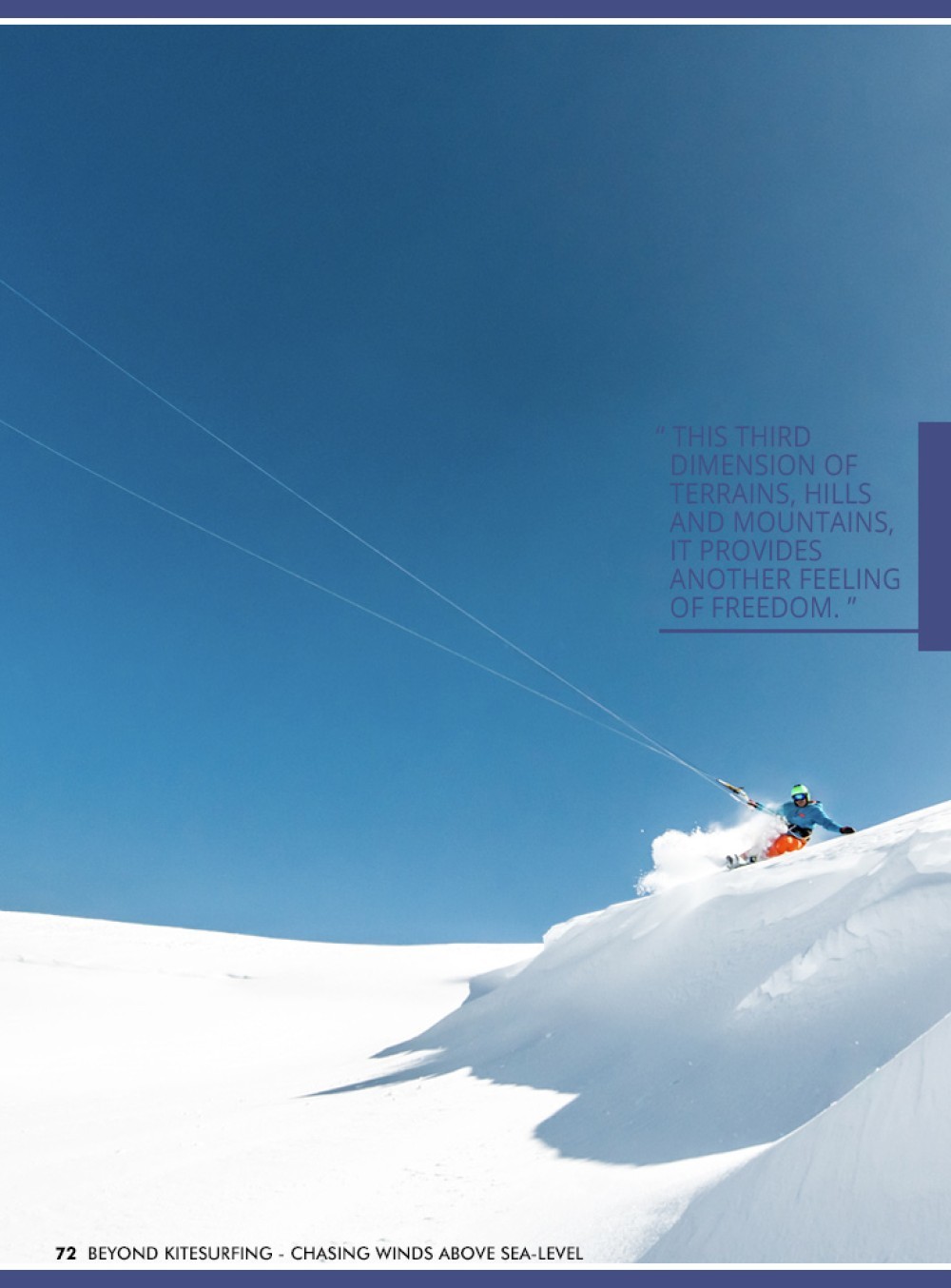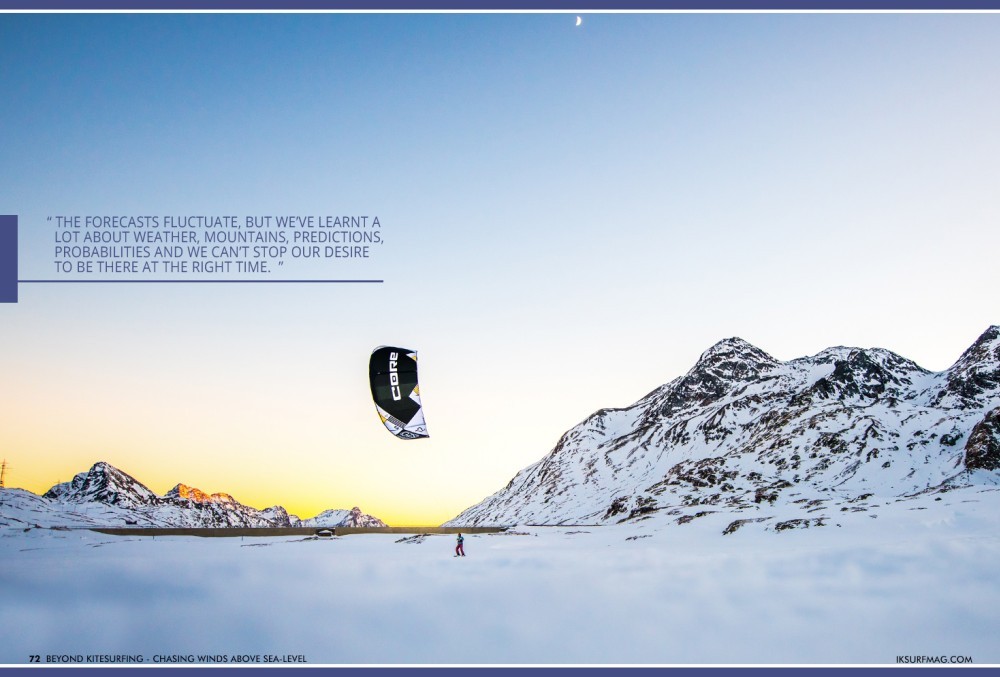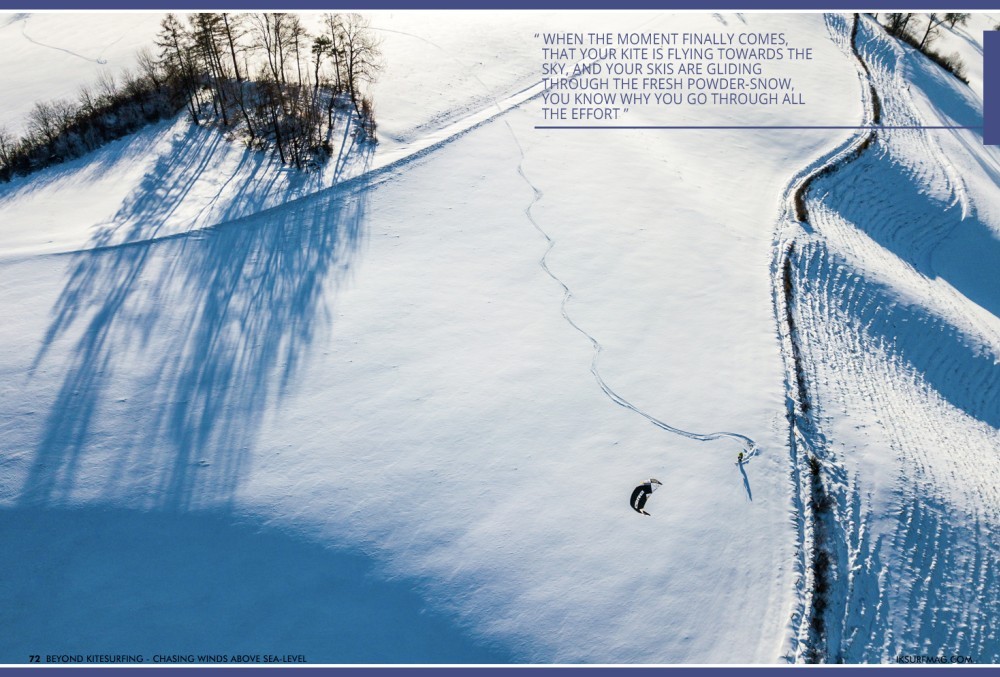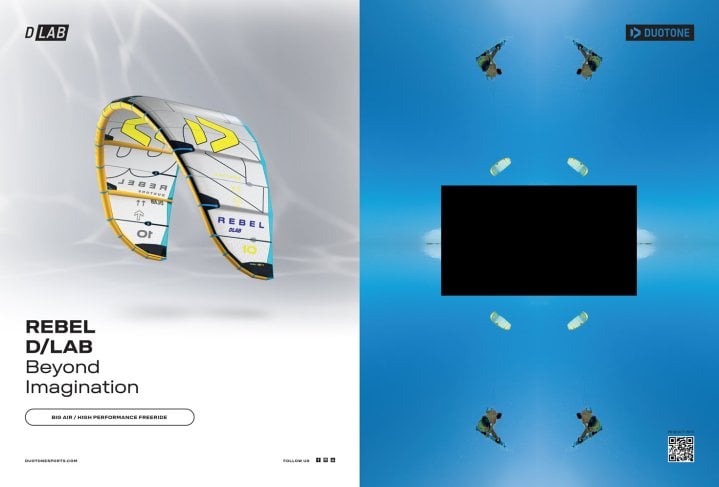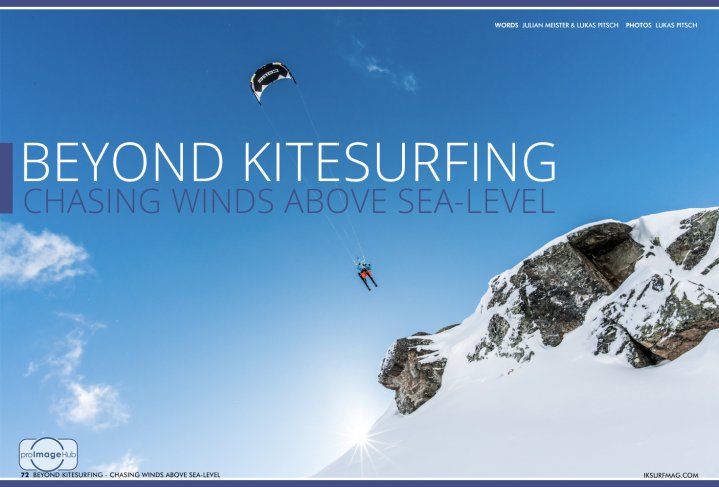
Beyond Kitesurfing
Issue 72 / Mon 10th Dec, 2018
Winter is coming, but that doesn’t mean you have to stop kiteboarding, why not strap on a snowboard or some ski’s and take your kites to the next level in the mountains? Check out Lukas Pitsch’s incredible guide to snowkiting right here!
Every kiteboarder knows the feeling when the forecast predicts wind, and suddenly it changes to dead calm. We have this internal urge, waiting for the wind to pick up, and our hearts beat faster when the wind ever so slightly starts to come through. But what happens when the wind is not the only factor you need to consider? What if you live far away from the sea and the lakes are frozen during the wintertime? This is what we do.
Living Faraway From The Sea
I’m not complaining about living in Switzerland; I'm confident that there are even some people that wish they lived in this little country in central Europe. However, this is not due to our kiteboarding conditions or beautiful beaches, we don’t have palm trees, and a Caipirinha will cost you 15 Euros in a bar. Nevertheless, just like you, we have an endless desire to kiteboard all year round, so we do!
There is no sea, no ocean, no sandbanks with steady wind or flat water, but we have mountains and a lot of them! Sometimes, they are blocking the wind or transforming a steady flow into gusty storms. They can also be helpful to channel the wind, building a local thermal system, and forming a never-ending playground. The mountain peaks reach 5000m above sea-level and are covered with an abundance of snow during the winter months. Most people enjoy walking up the mountains with the skis, but we prefer using the winds to ride up!
The Third Dimension
Our snowkite addiction started as the sport began to develop. Only a few of us were crazy enough to trade in their bikinis and boardshorts, for heavy winter clothes and boots so we could head into the unknown.
Ten years on, the sport has become more and more popular, and a lot of information about snowkiting spots are available, thanks to the internet (shout-out to our friends from unhooked.ch and windfenster.ch!)
Snowkiting has become so popular that on a perfect day at the famous Bernina-Pass spot, more than 100 snowkiters are sharing their passion. Like us, they love to have the flexibility to enjoy skiing in the fluffy powder snow as far away from the crowds at ski resorts as possible and explore the backcountry instead.
Snowkiting is one of the most versatile sports around. Depending on your skills, anything is possible, from relaxed exploration to hooked, and unhooked tricks. There is an additional important aspect: the terrain and mountains, adding a third dimension.
Planning - Wind, Weather and Spots
Exploring nature seems to have become popular these days. Instagram is packed with adventure stories (or at least people pretending to spend time outdoors) but honestly, is there anything better than steering your kite in the blue sky, while the wind is blowing into your face? It makes you feel complete freedom, despite getting cold hands, carrying heavy camera equipment on your shoulders and enduring exhausting walks through deep snow. It’s a deep passion for chasing winds and searching for perfect conditions, hidden spots, which also connects people, and builds lifetime friendships.
Despite the fascination and the versatility of snowkiting, only a minority of kiteboarders ever explore the mountains. Of course, snowkiting cannot be compared with kiteboarding in a flat-water lagoon, with steady winds or wavekiting on a nice point-break. Most lagoons and wave spots are famous for their kiteboarding conditions, so people venture to postcard locations, where the table is set for a perfect session.
However, the weather in the mountains changes more often, much faster, and additionally, you need snow as well (you don’t like kiteboarding in a dried out lagoon either, do you?) and this makes snowkiting slightly more complicated. You need to understand the local conditions first before you launch your kite. If you do not belong to the group who immediately end their snowkite-career after their first try on harsh snow on a gusty spot, you’re probably already addicted, and have become one of us!
We spend almost every weekend somewhere in the Swiss mountain region. The addiction begins with days and nights spent discovering new potential spots on Google Earth and studying wind directions. In parallel, all weather forecasts and webcams are being checked. It’s not unusual that a snowkite day starts with ski-touring (i.e. walking!) until you reach a windy location. The realisation of a successful snowkite trip requires a lot of flexibility, and it’s usually not until Friday night that a spot gets finally selected; mountain weather can completely change within a short period.
Snowkiting requires even more gear than kiteboarding. Besides all the essential gear, you also need dedicated freeride equipment, food, and of course, a proper camera! If this hasn’t intimidated you yet, and you’re still keen for your first steps into the best thing on earth, you'll be interested in the following.
Tips And Tricks For Your First Runs On The Snow
- Make sure you have good weather forecasted to start with. It not only makes snowkiting much more enjoyable, but it is also safer. You have more control with a better view of the ground, and this gets even more essential when you start with your first jumps; you don’t want to be flying in a complete whiteout!
- The wind in the mountains is in generally stronger than predicted! Sometimes, a forecast of 5 knots can lead to a perfect snowkiting day. The wind becomes gustier the stronger it gets in the mountains. Keep in mind, that you need less wind on snow, as there is no need of a minimal force holding you above water-level.
- Make sure not to bring too much gear on your trip. We usually pack all our kites (7m, 9m and 12m) in the cars, and decide at the starting point. Depending on the planned tour, and the actual wind at the spot, plan to leave one out of the three kites behind.
- You can ride steep tracks, downhill, and uphill but don’t overestimate yourself. For your first snowkite sessions, choose a flat terrain and be aware that the terrain also affects the wind. If there is no area, select a spot where the wind blows uphill. Thereby you can comfortably ride down the slopes with gravity, and kite back uphill using the wind.
- Keep in mind that the wind increases with higher altitudes. Sometimes the wind is light at the launching spot, and it’s hard to keep the kite up in the air, but that’s ok, as you can loop the kite to increase power and to reach higher altitudes, where you will find stronger winds.
The Main Question: Tube And Soft Kites
We always get asked the same question: Tube or soft kite? For sure, both kites can be used and have their advantages; it depends on what you like to do. The main benefits of soft kites are their minimised weight, and there is no need to carry around a pump. They are also easier for self-launching and landing. This makes them suitable for exploratory tours, especially when you combine your trip with hiking, climbing, or longer ski tours.
There are also many reasons to use tube kites. We appreciate their stability in the air, especially in gusty winds. We use the CORE GTS tube kites because they are versatile all-around kites. Their fast and precise steering and looping ability are great in the summer, but it will also help you ascending the summits in the winter. They also have a very easy reverse launch and are extremely powerful, if you fly them actively, as you often do on the snow. Just be careful, as tube kites are not usually tested for freezing temperatures. Materials behave differently below zero degrees, adding a risk of material failure, and probably voids any warranty claims.
Safety
You need to take all the precautionary measures, as you need for kiteboarding, such as the quick release and the safety leash. It also makes sense to wear a helmet, and protective equipment, as the landings on snow, can be much harder than on water. If you are exploring the mountains, you have to get back to the valley on time even when the wind dies. Always stay uphill from your starting point and have ski touring equipment with you. Don’t even think about walking back from the backcountry in your boots, as you would be exhausted within minutes!
Avalanches are another threat while in the mountains and this is no different for snowkiters. Always check the local avalanche bulletin before every session, and stay away from very steep slopes. This gets even more important when there are other snowkiters around, and below you. We always have avalanche detectors and rescue equipment with us. Not only avalanches but also material failures can be very dangerous especially in the mountains. Always carefully check your gear, use equipment that is developed for mountain use, and respect nature and protected areas.
Versatile Snowkite Disciplines
Freeriding And Backcountry
Snowkiting is all about enjoying nature as far away from the crowds of the ski resorts as possible. After a heavy snowfall, there is nothing better than freeriding. On these days, you want to loop your kite up the mountains, followed by downhill turns in the deep powder. Even on the popular snowkite spots, you’ll always find some untouched areas, somewhere in the backcountry.
Mega Loops
Many kiteboarders see this as the most extreme discipline you can do. The feeling when the kite pulls you during the loop is indeed incredible. It also works on snow, but there is one significant difference: The days with good mega loop conditions on water are sporadic, in comparison to snowkiting. Even in light winds with a 12m kite, you can build-up enough speed by skiing downhill, taking off, and steering into a mega loop. The kite abruptly accelerates you in the opposite direction, which throws you back to the slope; no heavy Cape Town storms and kickers needed here!
Sailing/Gliding/Hangtime
Be careful, sailing (jumping off the hill and gliding down the slope) with a kite on snow can lead to serious addiction! In comparison to the other disciplines, sailing is only possible while snowkiting, as you need a slope with the wind blowing uphill. If you’re a skier, ride-up to the top of the hill, and park your kite on the summit and let your bar go, turn yourself 180°, and grab the bar from the other side. This will feel very strange at first, but after a while, you’ll get the hang of it.
Then you start skiing downhill straight against the wind direction, with long arms to depower the kite. Once you reach enough speed, the take-off begins by pulling the bar. The bar is used for steering and for controlling the height. With this technique, you can fly as high as you want, but it's strongly recommended always to stay close to the terrain! To get started with sailing, practise skiing downhill with the reversed bar, without take-off. The hill should preferably run out flat, to minimise the risk of sailing down too far. In general, it is easier to fly with large kites in light and stable winds.
Just keep in mind, kites are not developed for sailing. If one of your four lines disconnects by accident, your flight will end immediately! For this reason, paragliders use different safety and redundancy systems made for flying.
It’s A Small World
Not many people are crazy enough to chase storms at the most unusual spot on this planet. It's a small circle of adrenaline-seeking snowkiters that you meet on these remote adventures.
Last winter, Andrea Luca Ammann (2x European Champion in snowkite-freestyle), called me up; I met him for the first time in Sicily in 2017. Andrea was in desperate need for some snowkite action. Coincidentally, I had planned to spend a few days in the mountains with my girlfriend, so I told him to pack his gear and join us. Without asking any questions, that same evening, he arrived at our apartment. It was only the second time we met, and he raved about “wakestyle” in the snow. I was intrigued, and now we had a mission!
When I asked Andrea what intrigued him about wakestyle snowkiting, he explained: “Well, snowkiting to me adds a whole different part to kiteboarding. This third dimension of terrains, hills and mountains, it provides another feeling of freedom. For wakestyle riding, this particularly means you can find decent natural kickers out there, just waiting for you in the backcountry. If they do not fit perfectly, you can easily tweak and tune them using a shovel!"
On this shoot with Lukas, on the Berninapass in Switzerland, it was clear to me that I wanted to create something different and more challenging than the usual big air shots we've all seen. There is a relatively small wakestyle scene on the snow, and there are even fewer photographers understanding what shooting snowkiting in backcountry demands. So this was a unique opportunity for both of us to team-up and create something special.
Addiction
Snow, in combination with wind, is not an exclusive privilege of our mountain regions. During the last few years, we found more and more spots transforming into little snowkite paradise during the wintertime, not far from where we live in Zurich. We got to know places all over Switzerland that we’d never heard of before.
We are checking their weather forecasts during the winter every single day, patiently waiting to go back again. Every spot offers a variety of options, and there’s always something new to explore in the backcountry, whether it’s a new photo spot or sailing hill. If the wind only changes directions by a few degrees, the playground changes its characteristics significantly.
The forecasts fluctuate, but we’ve learnt a lot about weather, mountains, predictions, probabilities and we can’t stop our desire to be there at the right time. When you’ve packed all your gear on your shoulders, ski-touring uphill, surrounded by breathtaking landscapes, you never know what nature has planned, and what winds are waiting for you up there.
When the moment finally comes, that your kite is flying towards the sky, and your skis are gliding through the fresh powder-snow, you know why you go through all the effort, over and over again.
About / Bio “Lukas.”
Lukas grew up and still lives in Switzerland. He has an immense passion for kitesurfing and snowkiting and loves nothing more than riding on windy lakes, travelling to the sea, and enjoying fresh snow in the mountains! His pictures are regularly published in kitesurfing magazines all over the world, and you’ll rarely see him without his camera gear. In 2014 he met Julian Meister, and they travel around the world for one year to kitesurf in 18 countries. Check out his work on http://www.proImageHub.ch and http://www.instagram.com/lupi.proimagehub
About / Bio “Julian.”
Julian was born in Austria where he discovered his passion for the wind and waves in his early years. With an age of only 12, he competed at the youth sailing world championship in Gran Canaria, when he already started travelling the world to find the windiest places. Since he took his first kitesurfing lessons when he was 17, the passion for kitesurfing quickly took over. He is one of the snowkiting pioneers in Austria, and his love for this sport grew even more after moving to Switzerland.
Videos
By Lukas Pitsch


